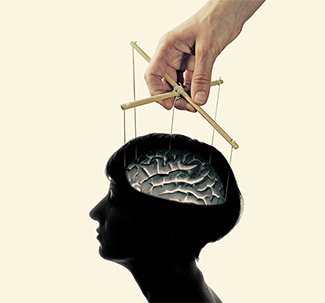Updated December 4, 2023
We’re often asked how we’re able to produce such dramatic lift in CTRs and in conversions for our clients. It’s no secret. We’ve been using word tactics in our content development since forever and the results are clear. See any number of micro case studies available on our homepage and you’ll likely notice something different about how we do content.
We’ve talked a lot about the syntax of messaging and the different methods used at each stage of audience refinement and segmentation. See our original posts The Taxonomy of Society and The Syntax of Consumerism for a deeper look at these subjects.
 All of this is based on the fundamental principles behind communication and psychology. Seriously, it’s not like we just make this stuff up. Our exceptional outcomes are based on prior successes that are grounded in philosophical, practical and scientific methods. We have a keen ability to mash-up information from different sources and experiences in ways that capitalize on current knowledge and deliver exceptional results.
All of this is based on the fundamental principles behind communication and psychology. Seriously, it’s not like we just make this stuff up. Our exceptional outcomes are based on prior successes that are grounded in philosophical, practical and scientific methods. We have a keen ability to mash-up information from different sources and experiences in ways that capitalize on current knowledge and deliver exceptional results.
For example, when we create content (ads, web page copy, emails, print ads, etc) for our clients; more specifically with the copy/text, we use three specific techniques designed to create the most powerful copy possible.
Words-per-sentence and grade level are two basic writing techniques that help to ensure copy meets baseline metrics for readability and for comprehension.
A third technique that not many agencies even know of is called word valence. Earlier this year, we hinted again at this in our post Is it What You Say, Or How You Say It?
But what exactly is word valence?
As defined by Wikipedia, “Valence, as used in psychology, especially in discussing emotions, means the intrinsic attractiveness (positive valence) or averseness (negative valence) of an event, object, or situation. However, the term is also used to characterize and categorize specific emotions. For example, the emotions popularly referred to as “negative”, such as anger and fear, have “negative valence”. Joy has “positive valence”.
But valence goes even deeper than that. According to research done by the National Center for Biotechnology Information, the Psychonomic Bulletin & Review, the Center for Reading Research and other important sources, words have an intrinsic effect, either positive or negative, on – and in relationship to – our emotions and our actions.
You can begin to see why we spend so much time on how we craft content for our clients. Single words, taglines, calls-to-action, email and web page text can all be valenced for more optimal outcomes.
Yet, measuring text valence is a tedious, word-by-word comparison, typically done by hand. Comparing the valence of this word versus that word and then totaling up the overall valence of a sentence or paragraph. Then, doing it all again for a comparative piece of text, ad infinitum.
After scoring the valence of a paragraph for the umpteenth time, it occurred to us that we could automate this process and save huge amounts of time in scoring larger texts and even in comparing them. That’s when we put our top-dog programmer, Mike Patton, on it. He devised an algorithm that checks copy against a database of valenced words; scores each one and also provides a total score for the entire text. In fact, we believe that this valence calculator is the first of its kind and it rocks!
Here is an example of two pieces of text scored using our valence calculator:
Don’t forget (3.73) your honey (7.27) on Valentine’s Day. (6.36)
Total Valence: 17.36
Remember (6.50) your special (7.50) sweetheart (7.84) on Valentine’s day (6.36)
Total Valence: 28.2
The higher the valence score, the better the message uptake by readers.
You can see the huge difference in valence score by the different types of words we use. For example, look at the valence of each of these words that could potentially all be used to convey the same meaning, as in; “It’s how we create/produce/generate/deliver superior outcomes.” Look at which words in question have the higher valence;
• Produce (6.57)
• Deliver (6.00)
• Create (7.86)
• Generate (6.14)
As you can imagine, certain words, even though their valence may be higher than a similar word, can throw off the readability and/or understandability of the copy. So, a fine balance between words-per-sentence, readability/comprehension, and valence needs to be attained. This process becomes even more constrained when text character, space and/or other limitations are present, such as in the case of tweets, paid search and mobile ads, for example.
Consider that, according to a recent Microsoft study, today the average attention span of most people is less than that of a goldfish; which is nine seconds.
Make your words work for you.
Send us your words or sentences and we’ll run them through our valence calculator and tell you the results.
Get better CTR, get more conversions. If you’re not getting the results (i.e., CTR, conversions, email opens, etc) that you want from your content marketing efforts, think about the readability, comprehension, and valence of your messages. Of course, you could just partner up with us and we’ll create content that touches your audience’s hearts and minds and evokes a strong call-to-action.
This article is part of the Conversion Marketing Thought Leadership Series.


